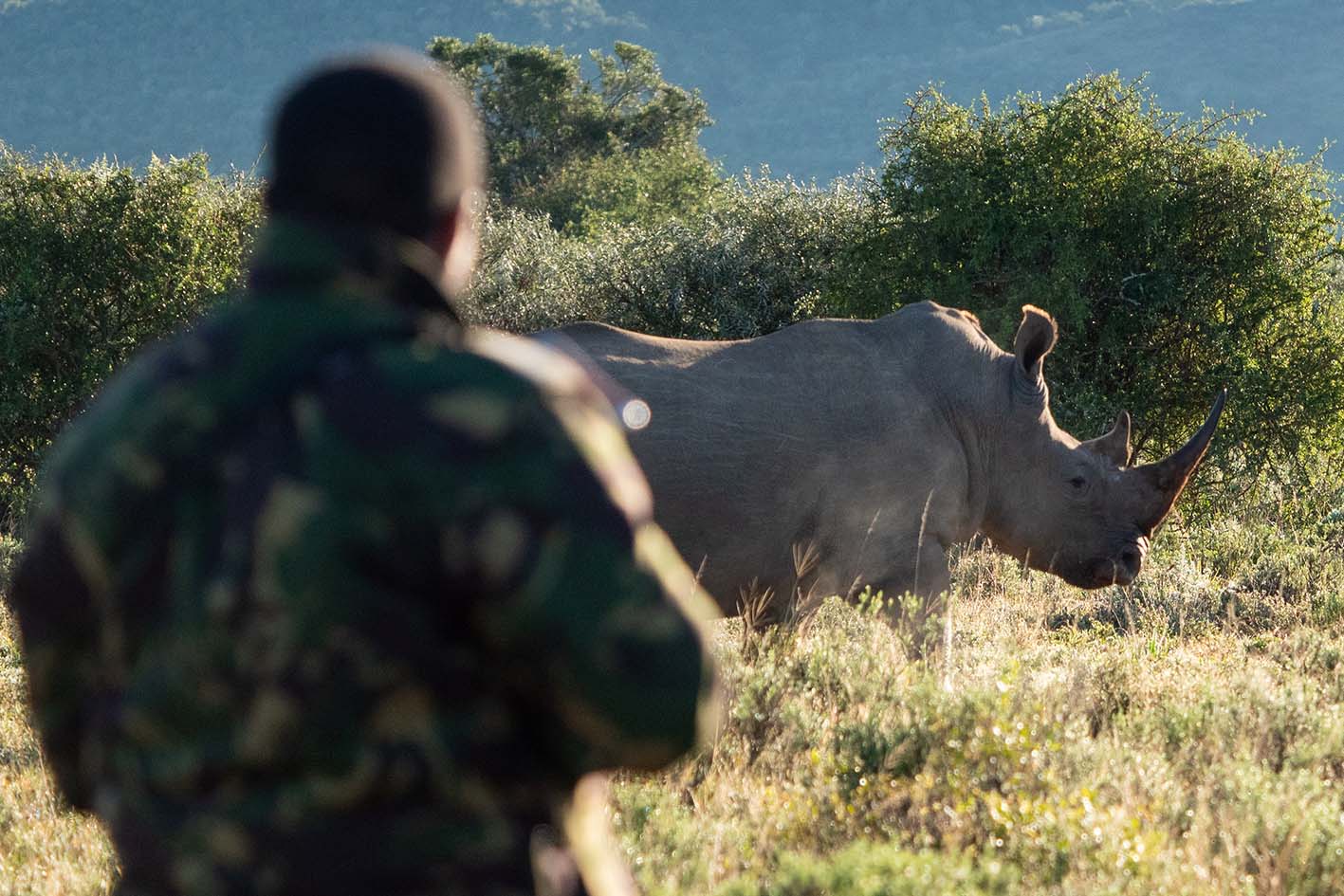Although their approach is quiet and careful from downwind, the white rhino senses something and lifts her head while, unconcerned, her calf continues grazing. Still, they manage to get closer and stop well within range. The rhino looks up again. This is the moment they’ve been waiting for – it’s perfect. The first camera clicks, capturing the rhino full-frame looking directly at the game vehicle, with her calf still grazing beside her.
These unique encounters with rare or endangered wildlife will highlight fondly remembered holidays for guests visiting game reserves such as Shamwari in the Eastern Cape. They’ll be recounted at dinner parties or when someone comments on the framed photo of the rhino and her calf on the mantlepiece.
The well-trained, experienced rangers with them will be able to tell them about why it’s called a white rhino, despite being dull grey, and how famed conservationist Dr. Ian Player brought it back from the brink of extinction.
As the sun sets and the ranger turns the game vehicle back towards the lodge for evening drinks and dinner, another group of specially trained rangers is getting ready for work. They pull on chest harnesses and Kevlar gloves and prepare to head out into the bush.
Rather than coolers packed with drinks and snacks, their equipment check includes rucksacks, sleeping bags, tents, knives, ballistic eyewear, and thermal scopes. These rangers are members of the anti-poaching unit. Unlike their counterparts on the game vehicles, they don’t look after guests. Their single, uncompromising task is to protect the wildlife on the reserve.
It’s a vital yet rugged and hazardous job. Not only do encounters with well-armed, ruthless poachers pose a risk, but so too do the animals on the Big Five reserve, which don’t distinguish between the humans hunting them and humans protecting them. Of course, nighttime is also when most predators are active.
Rodney Visser, head of Shamwari’s 19-strong anti-poaching unit, says its members have to be very dedicated and committed, not to mention physically fit. On foot patrols through the 250 km2 reserve, they need to carry all their equipment, food, water, sleeping bags, and tents and still be able to track, chase and apprehend any poachers they find.
Their training is equally rigorous and includes firearm competency, close-quarter combat, special weapons and tactics, tracking, first aid, basic firefighting, and animal behavior. They attend Criminal Procedures Act and management courses. There’s also specialist dog handling and drone-pilot training.
The unit’s members come from various backgrounds, from conservation to police and military. Contrary to perceptions, they’re not all big, beefy men. A woman who formerly worked at Shamwari’s animal hospital is among them. Her love of animals and chats with the anti-poaching rangers who would bring in sick or injured animals led her to change careers.
“I wasn’t cut any slack because I’m a woman, and the training is very tough,” says Jongikhaya[1]. “It has to be to ensure I can perform to the same standards as my male counterparts in the bush. Their lives and those of the animals we protect depend on it.”
Visser says that the training and the methods used prevent poaching constantly evolve as the poachers change tactics to try and outsmart the anti-poaching patrols.
“We use a combination of tried-and-tested approaches, such as dogs for tracking and apprehension. New technologies include drones, cameras, sensors, and tracking devices. These help us to get the anti-poaching teams where they need to be. Foot patrols are essential to establish ground truth, but we’re also looking to introduce air assets to improve response times.”
He explains that the anti-poaching unit is just one part of a more significant effort to protect South Africa’s wildlife. Effective counter-poaching requires a multi-dimensional approach where private game reserves, national parks, the SAPS, prosecution authorities, and communities work together.
“Ideally, we want to know about and stop the poachers before they get through the fence. That’s why we cooperate with all the surrounding reserves, including the Addo Elephant Park, sharing intelligence and expertise. We also do a lot of community work. This provides training, resources, job opportunities, and other support so everyone benefits and understands that a live animal is an asset that keeps bringing income and employment. One killed for its horn brings little value to the local community.”
He says that events such as World Ranger Day (31 July) are essential to focus on rangers’ work to protect and conserve wildlife, often at risk to their own lives.
“The anti-poaching units are the last line of defense, but the nature of their work means they don’t seek the limelight and that their importance is largely overlooked. That’s why it’s fitting to mark their contribution to conservation.”
For the unit at Shamwari, that contribution has included assisting in shutting down two rhino-poaching syndicates and arresting 11 suspected poachers.


